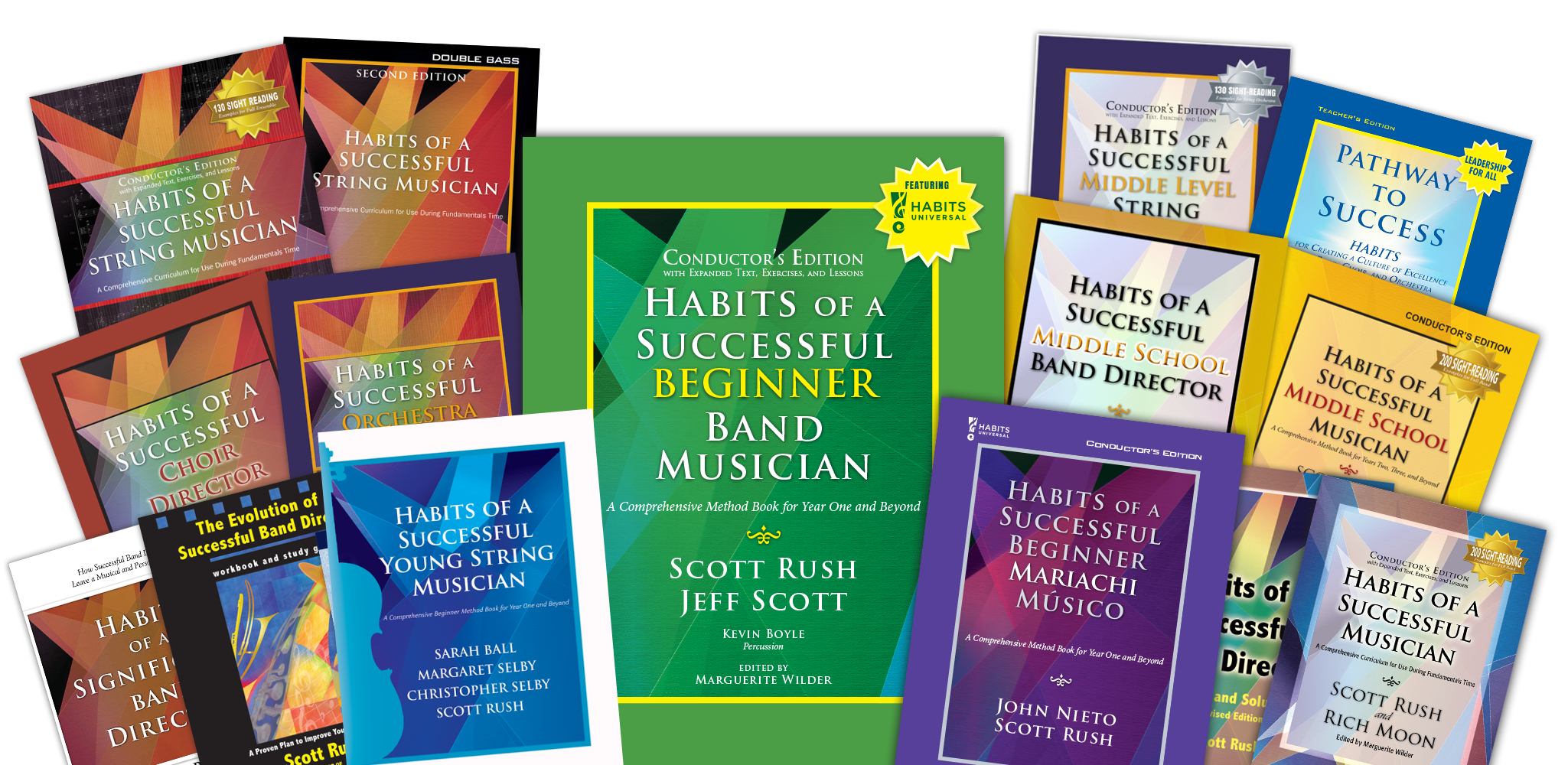For music educators guiding students through their first year of band instruction, few resources offer the depth, structure, and technological integration of Habits of a Successful Beginner Band Musician – Conductor’s Edition. This comprehensive method book is more than just a sequence of exercises—it’s a curriculum blueprint built to foster foundational musicianship, long-term engagement, and measurable progress from day one.
Designed through years of field testing, the book contains 225 sequential exercises tailored to the beginner’s journey. Whether you’re teaching brass, woodwinds, or percussion, this resource meets each student at their level while introducing them to core musical concepts in a progressive and engaging manner.
A New Era in Band Instruction with Habits Universal
What truly elevates this method book is its digital counterpart: Habits Universal. Far more than a static PDF or companion app, Habits Universal brings cutting-edge functionality to the band room and the remote classroom alike. Students can record and submit video performances, which are directly integrated into an online gradebook that syncs effortlessly with major learning management systems, including PowerSchool, Canvas, Google Classroom, Brightspace, Edmodo, and Schoology.
Educators benefit from efficient assessment and streamlined feedback, while students gain valuable self-reflection opportunities through video review. The platform also provides:
- Accompaniment tracks to enhance at-home practice
- Professional video coaches guiding each exercise
- Rhythm vocabulary sheets to support music literacy
- Start-up clinics for foundational instruction
This robust ecosystem makes Habits of a Successful Beginner Band Musician uniquely equipped to support today’s hybrid and digital-first learning environments.
Standout Pedagogical Features for Conductors
The conductor’s edition is not simply a larger version of the student book. It is loaded with strategic teacher insights for every exercise. These tips help instructors understand the pedagogical intent behind each lesson and provide cues for technical emphasis, posture correction, tone development, and ensemble cohesion.
Among the standout teaching tools included are:
- Initial exercises designed for individual components: mouthpiece-only for brass, mouthpiece and barrel or reed for woodwinds, and headjoint for flutes. This pre-note instruction ensures better embouchure and tone quality from the beginning.
- Diatonic solfege begins from the first lesson, embedding pitch literacy early and effectively.
- Shaded boxes mark first-time technical or conceptual challenges, helping teachers and students focus attention and effort at the right time.
- Left and right hand indicators for woodwinds assist in proper fingering technique, reducing confusion and promoting good habits.
- Chromatic fingering guides and alternate fingering indicators support technical fluency and agility, especially in more complex passages.
Rhythmic Literacy Built Into the Core
One of the most innovative aspects of the book is its integrated rhythm development. Students encounter rhythm in both abstract and applied formats: first through standalone rhythm charts, and then within melodic exercises. This seamless transition from reading to performing promotes a more intuitive and confident approach to rhythmic interpretation.
The rhythm vocabulary gradually advances from quarter and eighth notes to dotted rhythms, sixteenths, and syncopated groupings, giving students a well-rounded understanding of time and meter.
Comprehensive Scale and Key Introduction
Most beginning band books focus heavily on Concert B-flat, leaving students unprepared when other keys emerge later. This method expands that foundation significantly by introducing five keys during the first year:
- Concert B-flat
- Concert E-flat
- Concert A-flat
- Concert C
- Concert F
Additionally, the Concert G scale is provided in the appendix, allowing for extended range and tonal exploration. Notably, this approach increases exposure to B, E, and A, reinforcing pitch recognition beyond the common flat-based instruction.
Instrument-Specific Guidance That Matters
The conductor’s edition includes valuable insights tailored to each instrument family. Examples include:
- A full explanation of (T:1) for trombones, including usage rules
- “F dilemma” guidance for oboe students to address fingering confusion
- Bassoon flicking techniques introduced with appropriate markings
- Clarinet-exclusive slow exercises targeting break transition and throat tone development
- Percussion rudiment training, beginning with single-hand coordination before introducing full rudiments
This level of attention to detail ensures that no student is left behind and that every instrument section receives the focused development they need.
Why This Method Book Matters
Habits of a Successful Beginner Band Musician – Conductor’s Edition offers more than just exercises. It offers a philosophy: that success in music is built through habit, precision, and intentional sequencing. By integrating strong pedagogy, digital innovation, and attention to student psychology, this book stands out as a modern essential for music educators.
Whether you’re building tone, technique, or teamwork in your ensemble, this resource gives you the tools to do it effectively. From day one to year-end assessments, it helps educators guide students through every challenge and every victory.










